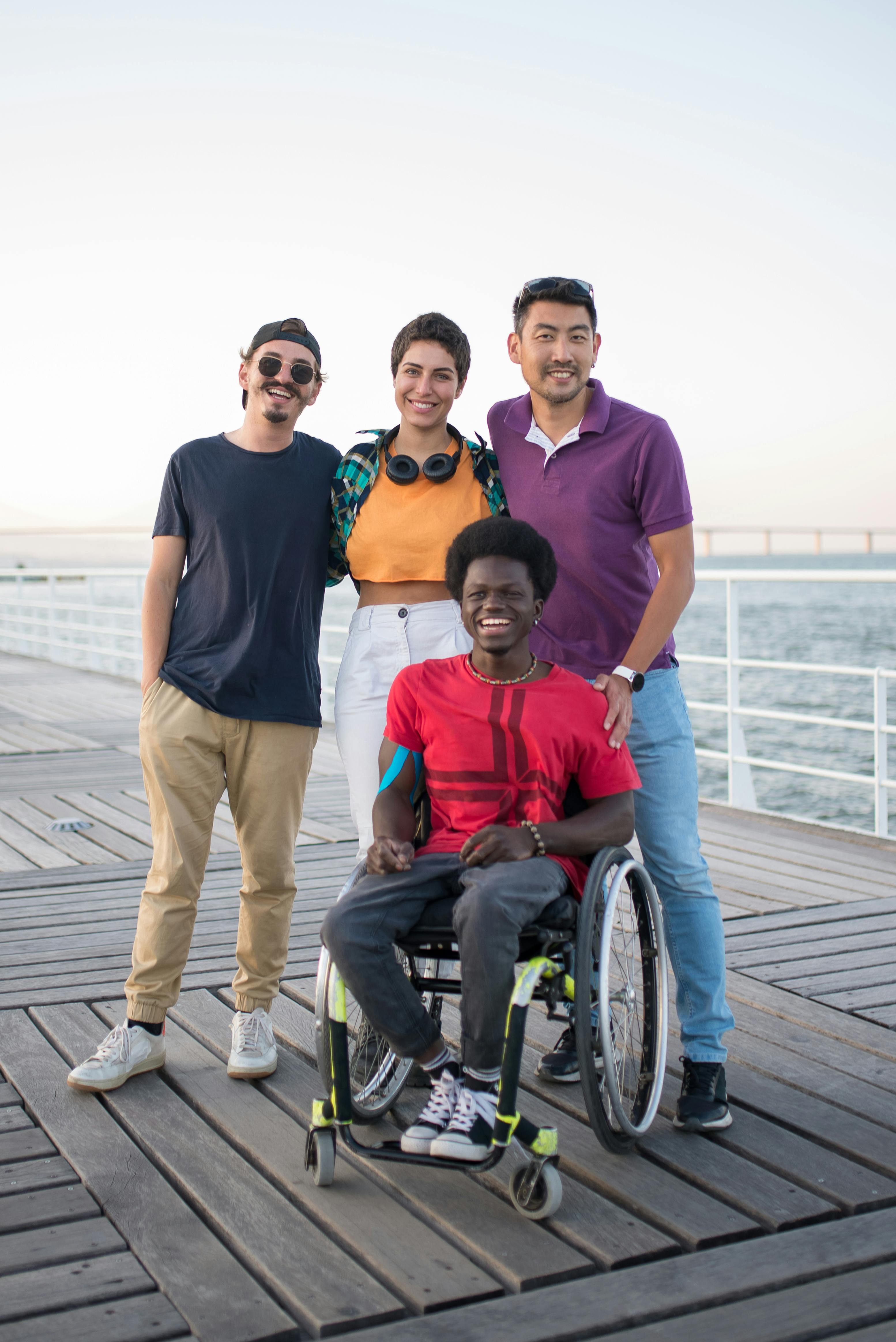Welcome to the World of Accessibility Hacks for Travelers with Disabilities!
Traveling is an exhilarating experience that opens up a world of possibilities. However, for individuals with disabilities, it can often be a daunting task. That’s where accessibility hacks come in, making travel easier and more enjoyable for everyone.
If you’re someone who faces mobility challenges, visual impairments, or any other disability, this blog post is for you. We understand how important it is to have the right tools and resources to navigate the world with ease. That’s why we’ve compiled a list of accessibility hacks specifically tailored for travelers like you.
In this blog post, we’ll explore innovative solutions that empower you to indulge in your wanderlust without any limitations. We’ll delve into expert tips and tricks that will revolutionize your travel experiences. From navigating airports and finding wheelchair-friendly accommodations to discovering accessible attractions, we’ve got you covered.
By incorporating these accessibility hacks into your travel plans, you’ll embark on a journey filled with greater independence and adventure. Gone are the days of feeling restricted or anxious about exploring new destinations. With the right knowledge and resources at your disposal, the world truly becomes your oyster.
So, if you’re ready to take your travel experiences to the next level, join us on this exciting adventure. Discover how accessibility hacks can transform your journeys from overwhelming to extraordinary. Get ready to break down barriers and create incredible memories that will last a lifetime.
[h2>Get ready to embark on a truly inclusive travel experience!

What are the Best Accessibility Hacks for Travelers with Disabilities?
When it comes to making travel accessible for individuals with disabilities, there are numerous strategies and tips that can greatly enhance the experience. From the perspective of someone with limited mobility or sensory impairments, the concept of accessibility may go beyond just physical accommodations. Accessibility hacks encompass a range of solutions, including practical advice, tools, and resources that enable travelers with disabilities to navigate the world with ease and confidence.
In the following sections, we will dive into the most effective accessibility hacks for travelers with disabilities. From tips on finding wheelchair-friendly accommodations to technological aids that enhance sensory experiences, we will explore various aspects and challenges faced by disabled travelers. By the end of this article, you will have a comprehensive understanding of how to maximize accessibility and make your travel experiences truly unforgettable.

Accessibility Hacks for Travelers with Disabilities
Traveling can be an exhilarating experience, offering new sights, sounds, and cultures to explore. However, for individuals with disabilities, it can present unique challenges. In this article, we will dive into various accessibility hacks that can empower travelers with disabilities to navigate the world with greater ease and confidence.
1. Research Your Destination Thoroughly
Prior to embarking on your journey, take the time to research your destination comprehensively. Look for information on accessible accommodations, transportation options, and attractions that cater to individuals with disabilities. Utilize travel blogs, forums, and official tourism websites to gather reliable and up-to-date information.
2. Plan Your Itinerary Strategically
Creating a well-thought-out itinerary can make a significant difference in the smoothness of your trip. Identify accessible routes, prioritize disability-friendly sights and activities, and allocate sufficient time for rest and self-care. It’s also beneficial to keep a list of emergency contacts and medical facilities that are easily accessible at your destination.
3. Communicate Your Needs in Advance
Whether you are booking accommodations, arranging transportation, or making restaurant reservations, it’s essential to communicate your specific requirements in advance. Inform airlines or train companies about any mobility aids you may be bringing with you and request assistance if needed. By providing advance notice, you can ensure that the necessary arrangements are made to accommodate your needs.
4. Bring Essential Accessibility Tools
- Portable ramps or threshold bridges to overcome small obstacles
- Collapsible mobility aids to facilitate transportation and storage
- Wheelchair accessories such as cushion inserts for added comfort
- Assistive technology devices for communication and navigation
- Braille or large-print maps and guidebooks
5. Utilize Accessible Transportation Services
Most major cities provide accessible transportation options such as wheelchair-accessible taxis, buses, and trains. Research and familiarize yourself with these services before your trip to ensure smoother mobility throughout your journey. Additionally, ride-sharing platforms often offer customizable options for travelers with disabilities.
6. Seek Local Assistance
When exploring a new destination, seek local assistance from disability organizations or tourist information centers. They can provide valuable insights into accessible attractions, barrier-free routes, and inclusive activities. Local guides who specialize in accessible tourism can offer unique insights and support tailored to your needs.
7. Advocate for Accessibility
While embarking on your journey, be an advocate for accessibility. Share your experiences on social media platforms or travel blogs to raise awareness and encourage positive change. By highlighting areas that need improvement and celebrating places that excel in accessibility, you can contribute to creating a more inclusive travel landscape.
According to recent statistics, approximately 15% of the global population lives with disabilities. With proper accessibility measures and awareness, the travel industry can cater to the diverse needs of this significant portion of society. By implementing these accessibility hacks, travelers with disabilities can embark on memorable journeys and enjoy the wonders the world has to offer.

Conclusion: Accessibility Hacks for Travelers with Disabilities
Accessible travel is an essential aspect of ensuring that individuals with disabilities can enjoy a fulfilling and enriching travel experience. In this article, we have explored various accessibility hacks that can greatly enhance the overall travel experience for people with disabilities.
One key insight we have discussed is the importance of thorough research and planning when it comes to choosing the right travel destinations. It is crucial to consider the availability of accessible accommodations, transportation options, and attractions that cater to the specific needs of individuals with disabilities. By selecting destinations that prioritize accessibility, travelers can ensure a smooth and enjoyable journey.
Another significant point highlighted in this article is the significance of assistive technology in facilitating accessible travel. From wheelchair-accessible ramps and lifts to innovative apps that provide real-time accessibility information, technology plays a vital role in empowering travelers with disabilities. By leveraging such tools, individuals can navigate unfamiliar environments with greater confidence and independence.
Additionally, we have emphasized the importance of advocating for accessibility and inclusivity within the travel industry. Travelers should actively engage with organizations and businesses to raise awareness about the needs and challenges faced by individuals with disabilities. Through collaboration and education, we can drive positive changes that make travel more accessible for everyone.
In conclusion, by implementing the accessibility hacks discussed in this article, travelers with disabilities can embark on remarkable journeys that surpass limitations and barriers. It is our collective responsibility to ensure equal access and opportunities for all, and through continuous efforts, we can make the world a more inclusive place for travelers of every ability.




